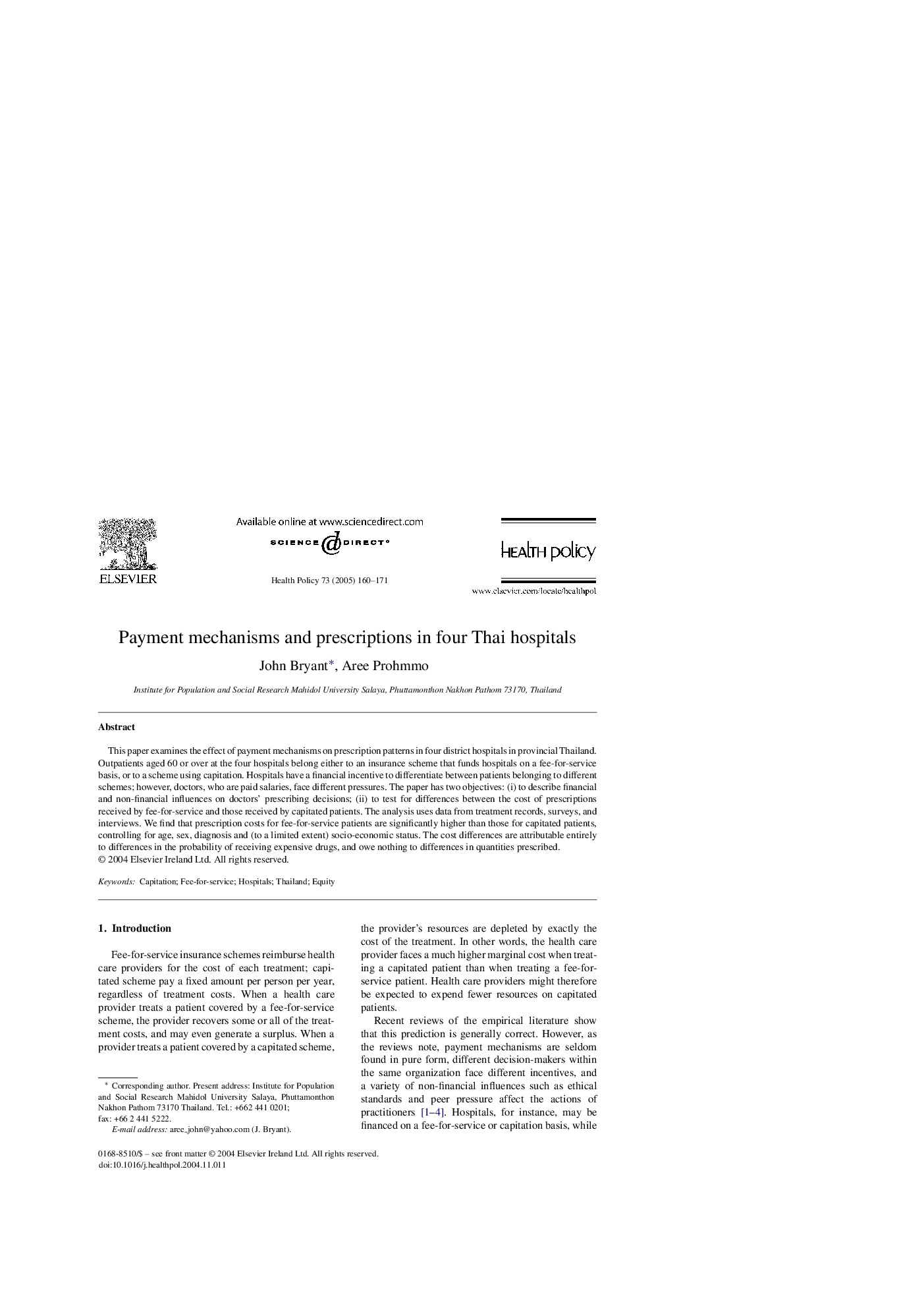| Article ID | Journal | Published Year | Pages | File Type |
|---|---|---|---|---|
| 9383074 | Health Policy | 2005 | 12 Pages |
Abstract
This paper examines the effect of payment mechanisms on prescription patterns in four district hospitals in provincial Thailand. Outpatients aged 60 or over at the four hospitals belong either to an insurance scheme that funds hospitals on a fee-for-service basis, or to a scheme using capitation. Hospitals have a financial incentive to differentiate between patients belonging to different schemes; however, doctors, who are paid salaries, face different pressures. The paper has two objectives: (i) to describe financial and non-financial influences on doctors' prescribing decisions; (ii) to test for differences between the cost of prescriptions received by fee-for-service and those received by capitated patients. The analysis uses data from treatment records, surveys, and interviews. We find that prescription costs for fee-for-service patients are significantly higher than those for capitated patients, controlling for age, sex, diagnosis and (to a limited extent) socio-economic status. The cost differences are attributable entirely to differences in the probability of receiving expensive drugs, and owe nothing to differences in quantities prescribed.
Related Topics
Health Sciences
Medicine and Dentistry
Public Health and Health Policy
Authors
John Bryant, Aree Prohmmo,
